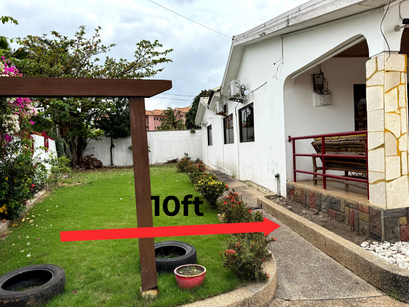Table of Contents
- Introduction
- What Is the 10-Foot Rule?
- Why Clearance Around Buildings Matters
- Safety and Fire Protection
- Ventilation and Natural Light
- Accessibility and Movement
- Structural Integrity
- Examples in Architecture
- How the Rule Shapes Modern Design
- Learn Building Standards at Deseret
- Conclusion
Introduction
When you walk past a building, you may notice open space around it—sometimes filled with pathways, plants, or even parking areas. This space isn’t just for looks. In many architectural designs, a 10-foot clearance is required around buildings. This “breathing space” serves important safety, comfort, and functional purposes.
Understanding why this rule exists helps both professionals and students in architecture design better appreciate how regulations shape the built environment.
What Is the 10-Foot Rule?
The 10-foot rule in architecture refers to leaving at least 10 feet of open space around a building. This isn’t an arbitrary number—it comes from building codes and urban planning guidelines that strike a balance between safety, ventilation, accessibility, and environmental comfort. Clearance space ensures that a building is not only safe but also livable and sustainable in the long term.

Why Clearance Around Buildings Matters
Safety and Fire Protection
One of the most important reasons for building clearance is fire safety. In the event of a fire, clearance provides space for emergency access and prevents flames from quickly spreading to adjacent structures. Firefighters also rely on this space to move around the building during emergencies.
Ventilation and Natural Light
Buildings need air and light just as people do. Adequate clearance ensures that fresh air can circulate and that natural sunlight can enter windows. Without this space, structures would feel cramped and poorly ventilated, leading to unhealthy living or working environments.
Accessibility and Movement
Clearance allows for safe pathways around the building, making it easier for people to move, escape in emergencies, or carry out maintenance work. It also provides access for utility workers who may need to reach plumbing, wiring, or external units.
Structural Integrity
A 10-foot clearance protects buildings from external pressures such as soil movement, flooding, or crowding by other structures. It also allows landscaping features like drainage systems, gardens, or stormwater management areas.
Examples in Architecture
Urban residential design benefits from clearance, preventing overcrowding and ensuring privacy between homes. Open spaces in public institutions, such as schools, allow for smooth evacuation and easy emergency access. Clearance in commercial buildings is crucial for accommodating parking, delivery zones, and pedestrian walkways.
How the Rule Shapes Modern Design
Modern architecture is about more than aesthetics—it’s about designing safe, functional, and sustainable spaces. The 10-foot rule influences how buildings are placed on land, how windows are positioned, and how utilities are planned. Architects who ignore this principle risk unsafe designs and legal issues with planning authorities.

Learn Building Standards at Deseret
At Deseret School of Design, our Architectural Design course goes beyond drawings and creativity; we teach the science and regulations behind great architecture. From understanding clearance rules to mastering software like Revit and SketchUp, you’ll learn how to design safe, modern, and impressive structures.
Conclusion
The 10-foot rule isn’t just a technical requirement—it’s a principle that ensures buildings are safe, healthy, and sustainable. Clearance around buildings supports fire safety, ventilation, movement, and durability. For aspiring architects, learning these rules is essential. With the right training, you can design spaces that are not only beautiful but also smart, functional, and code-compliant. Deseret School of Design is here to guide you every step of the way.




 Course Fees Increasing on January 01/01/2026 ! Enroll now at current rates before prices go up.
Course Fees Increasing on January 01/01/2026 ! Enroll now at current rates before prices go up.